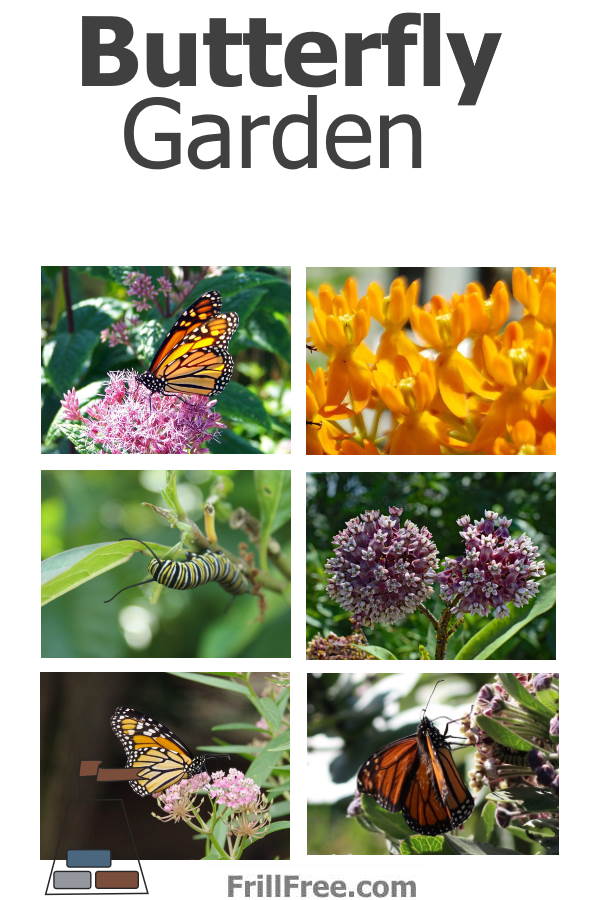- Homesteading
- Garden Designs
- Butterfly Garden
Butterfly Garden
With the damning news that the monarch butterfly has now been put on the endangered list, due to habitat loss and climate change, the push is on to plant more plants that will support them, here in Canada.
Monarchs may be only one of many endangered insects, and they are not the only one to be attracted to nectar plants that we grow in our gardens. Other insects are the many wasps, bumble bees, butterflies and moths.
Asclepias incarnata, the swamp milkweed, is the most popular nectar plant for many butterflies, and it also happens to be the only larval host plant for them.
So if you plant this large scale perennial in your garden, but then notice holes chewed in the leaves, consider your efforts a success; you probably have some of the huge striped green and yellow caterpillars, feasting on the only food source they will eat.
Do watch for other critters that might make inroads into the foliage. Beetles and weevils can be washed off with a hose.
Companion plants are thistles, and their tiny cousins, wild violets. The thistles attract the gorgeous Speyeria leto (the female Great Spangled Fritillary) and Speyeria cybele, the male. The violets are the larval host plant, which their caterpillars eat, then pupate beside.
Other good choices would be any herbs, such as Basil, rue, sage, mint and the like. These attract lots of different butterflies, and also bees and other pollinators.
Add a few privet bushes and flat topped flowers like Achillea, and the tall Sedum species, along with some annual zinnias
and cosmos,
and you'll most likely get at least a few butterflies in your garden.
I won't be stopping with perennials and shrubs; there are many other annuals, like Centaurea americana, the native bachelors buttons, and Helianthus argophyllus, the silverleaf sunflower.
As well as biennials, those plants that take two years to flower from seed. These are the giant thistles, even mullien for architectural interest, and Echinops, the globe thistle.
The palette of plants to attract, feed and nurture generations of butterflies, and other pollinators, is huge.
You can get seed of Centurea americana with its four inch flowers at Select Seeds, or through Seed Savers. The problem with saving your own is that many finch like birds love the seeds through the winter, so save a few for yourself early, and don't rely on them re-seeding naturally.
Other beauties to look for to add more depth is the native impatiens, or jewel weed. Impatiens pallida and I. capensis - which prefers damp soil, are lovely, as well as beloved by hummingbirds - always a good recommendation.
Leavenworth’s eryngium, Eryngium leavenworthii, a gorgeous blue pineapple shaped flower, attracts pollinators, and will survive the hottest, driest conditions, like the 'hell strip' beside the road.
I will also keep collecting seeds from my Nasturtiums, which are always a huge hit, and growing that favorite, annual Petunias.
Pansies are a great plant too, but one thing I've noticed with all of these; the biggest attractors for butterflies are those with a strong scent. When you save seeds from Nasturtiums, especially, choose those that are fragrant, hopefully that trait will be one that continues.















